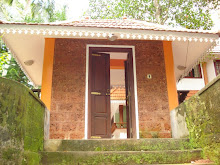
As India awoke in 1947, its tinsel dreams too got a providential thrust that year with the likes of Raj Kapoor, MGR, Lata Mangeshkar, Uttam Kumar and Dilip Kumar either making their debut or finally finding limelight with their first hit.
With the country marking 60 years of its political unshackling in 2007 it could certainly look back with awe at 1947 when a few vital building blocks of its film industry were laid by some formidable institutions and stalwarts.
The rise of a galaxy of stars was also accompanied by the establishment of seminal organisations like the Calcutta Film Society by Satyajit Ray (among others), AVM Studios in Madras and Udaya Studios in Kerala.
Indeed, just four days after Pandit Nehru first raised the Tricolour at the Red Fort, 17-year-old Hema Hardikar, who had been singing for Marathi films since 1942, got her first Hindi film song recorded.
"Along with the nation I think the stars of many of us were in favourable positions. It was a good time for all of us," the girl, now at a grand age of 77, reminisced during a chat with me.
Although that song for the film "Aap Ki Seva Mein" went unnoticed, a prescient Ghulam Haider and a genius Anil Biswas later mentored her into a phenomenon, which at different times soothed a nation, made its leaders' weep and serenaded several generations.
Lata Mangeshkar had knocked at Bollywood's doors that day.
"Imagine! I was having a really bad time trying to get work till August that year. Then suddenly some doors opened and there was no looking back," Lata said.
While the nightingale herself credits "propitious" time for the success of so many people in this trade, other experts cite historical reasons for the unprecedented spurt in activity.
“I feel the spurt seen in 1947 was a culmination of a build up that began after the end of the World War – II, when a period of great shortages had come to an end," veteran filmmaker Shyam Benegal observes. "Due to the severe scarcity of raw stock film there was rationing of material during the war. But after the war ended, suddenly things were available in plenty," he said.
Former National Film Archives of India director P K Nair notes that replacement of the studio system with the star-system, beginning in early 1940s, put the emphasis on numbers instead of quality and dependence on extensive use of music and dance, spawning stars even among singers and music directors.
Lata recalled that after being rejected initially for her "thin voice" by musicians who were more used to nasal and full-throated voices, it was a Pathan supplier at a studio who introduced her to Ghulam Haider and subsequently to unimaginable fame.
Meanwhile two other Pathans from Peshawar had already begun exploring their paths towards cinematic glory.
Having bid goodbye to formal education and having trained his sight on mastering the craft, Ranbiraj, a one time voluntary clapper-boy-cum-sweeper at Bombay Talkies despite his genes, ended up acting in Kidar Sharma's "Neel Kamal" that year – his first lead role.Soon he used that early Bombay Talkies "underdog experience" to propel himself towards the title of Bollywood's greatest showman under the name Raj Kapoor."
1947 was a very important year for Raj (Kapoor) ji. `Neel Kamal' was released. His son Dabboo (Randhir Kapoor) was born and he got his Ford," veteran actor Shammi Kapoor, Raj's younger brother, recalls. "I remember Raj ji was extremely busy as he was totally involved into films by then. He had begun shooting `Aag'," said Shammi, who himself passed his matriculation in 1947.
The other Pathan – a former neighbour of the Kapoors in Peshawar – too was set to make his rendezvous with destiny.
An Afghan Pushtun fruit-seller’s son, Mohammed Yusuf Khan had already been spotted by the legendary actress Devika Rani and had acted in films like Bombay Talkies' "Jwar Bhatta" (1944). But it was "Jugnu", released in 1947, which brought the first rays of stardom to Dilip Kumar.
The reigning singing-star Noorjehan, crooning the evergreen sentimental "Yahan Badla Wafa Ka" in that film, perhaps may not have realized that she was witnessing the ascendance of two meteors of Indian cinema.
As she shared screen-space with Dilip Kumar in “Jugnu”, her voice was also matching notes with a certain Mohammed Rafi, for whom this song acted as a catapult to fame.
Such was the sudden creative fervour that erupted in that watershed year that according to NFAI figures, from a modest 199 films released across India in 1946 the figure jumped nearly 40% in 1947, touching 280.
While all this and more was happening in Bollywood a similar phenomenon was being witnessed in other smaller industries too.
Although bitten by the acting bug right from childhood, thanks to a family-run theatre group, Arun Kumar Chatterjee, a mellow-voiced youth from north-Calcutta also devoted time to other activities, primarily sports like `lathi-khela’, swimming and horse riding.
He went on to become the biggest icon of Bengali cinema and one of the greats of the Indian cinema as none other than the hypnotic Uttam Kumar. While it was the 1949 flop “Kamana” that launched him as a lead actor, the “Mahanayak” of Bengal took his baby step in 1947 with a Hindi film “Mayador”, which although was never released.
Tamil cinema, whose few month’s delay in launching talkies, made its second position behind “Alam Ara” a mere technicality, could not have been behind in this case either.

1 comment:
wow...this a good start...dil mein chupa ke pyar ka toofan le chale
Post a Comment